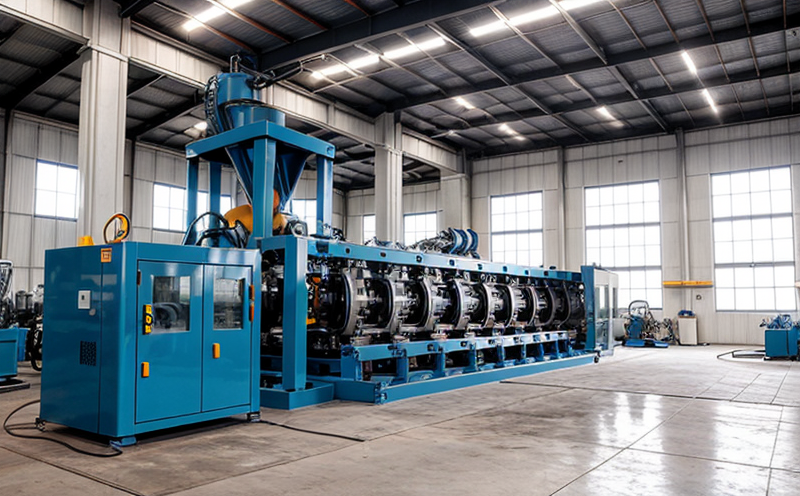ISO 20332 Cranes Structural Performance Testing
The ISO 20332 standard is a critical benchmark for ensuring the structural integrity and performance of cranes used in industrial manufacturing processes. This service focuses on testing crane components to ensure they meet stringent safety requirements as outlined by this international standard.
ISO 20332 covers various aspects of structural performance, including static load tests, fatigue strength assessments, and dynamic loading evaluations. These tests are essential for confirming that cranes can operate reliably under the expected working conditions without compromising safety or efficiency.
The testing process involves several key steps: initial inspection of the crane components, preparation of specimens according to specific protocols defined in ISO 20332, application of standardized loads, and analysis of deformation, stress, and failure modes. The goal is not only to identify any potential weaknesses but also to provide detailed insights into how the cranes perform under simulated working conditions.
Our laboratory uses state-of-the-art equipment and methodologies compliant with ISO 20332 to ensure accurate results. By adhering strictly to these standards, we guarantee that our findings are reliable and can be trusted by clients in various industries relying on safe and efficient crane operations.
This testing service is particularly beneficial for companies involved in heavy machinery manufacturing, logistics, construction, and any other sectors where cranes play a crucial role. It helps ensure compliance with international regulations while enhancing the overall quality of products and services offered by these organizations.
Applied Standards
| Standard | Description |
|---|---|
| ISO 20332:2015 | International standard specifying the methods for determining structural performance of cranes. |
| ASTM E846-19 | American Society for Testing and Materials specification applicable to fatigue testing of large structural components. |
| EN 375:2014 | European Norm providing additional guidance on crane design and operation safety. |
Why Choose This Test
Selecting ISO 20332 Cranes Structural Performance Testing offers numerous advantages to manufacturers and operators of heavy machinery. Firstly, it ensures that your cranes meet the highest global safety standards, which is crucial for maintaining a good reputation in competitive markets.
The test results provide valuable data on the structural integrity and performance capabilities of your cranes, helping you make informed decisions about maintenance schedules and potential upgrades. This information can significantly reduce downtime and operational costs by preventing unexpected failures.
Compliance with ISO 20332 also opens up opportunities for international markets where stringent safety regulations are enforced. Many countries require imported goods to comply with local standards, making this testing service not just a recommendation but often a necessity.
In addition, the detailed reports generated from these tests can be used during audits or when seeking certifications related to occupational health and safety. These documents serve as proof of adherence to industry best practices, boosting your company’s credibility within the marketplace.
Competitive Advantage and Market Impact
Incorporating ISO 20332 Cranes Structural Performance Testing into your quality assurance processes sets you apart from competitors by demonstrating a commitment to excellence in product safety and reliability. This dedication translates directly into customer satisfaction, leading to increased loyalty and repeat business.
By ensuring that all cranes meet the stringent requirements set forth by ISO 20332, you minimize risks associated with unsafe equipment, thereby protecting both employees and assets from potential hazards. Such measures contribute positively towards fostering a safer working environment overall.
The confidence instilled in clients regarding the quality of your products can lead to higher order volumes and broader market penetration. Furthermore, compliance with international standards enhances your ability to participate actively in global tenders, thereby expanding your business horizons beyond regional boundaries.





